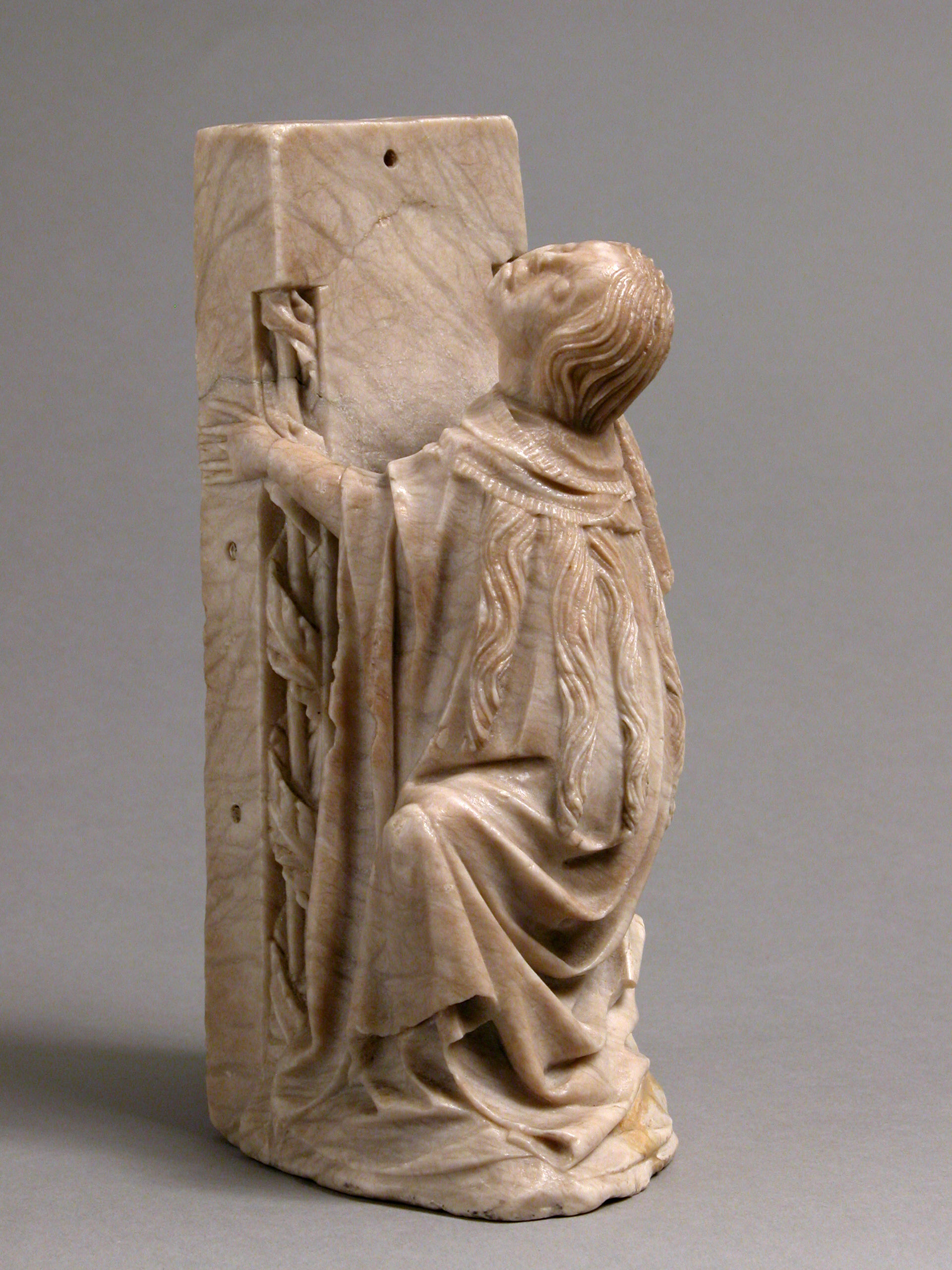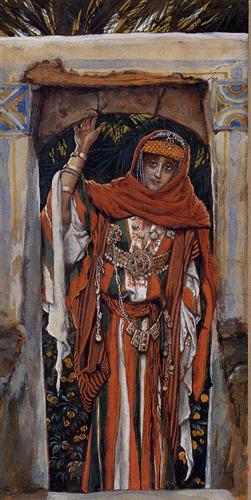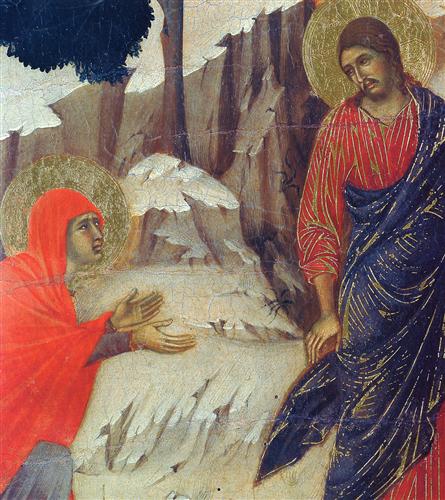Mary Magdalene is considered to be one of the most important and influential church figures in history. Magdalene is well know for her promiscuous, demonic past and her dramatic redemption at Jesus's feet. She was at the foot of the cross when Jesus was being crucified and was the first to see the resurrection of Jesus. Though we have no idea what happened to her after Jesus's resurrection there are many hypothesis' but that never stopped her popularity. For many centuries she has been a massive icon for Christian devotion and repentance. Magdalene has been portrayed as either a saint or a sinner which either takes place before, during, or after her conversion - she is either a drifting soul or a devout woman. Anna Jameson writes, "She is also usually shown with long hair and a red or blue garb; the red represents her fervor of her love and the blue symbolizes mourning and penitence." Although Mary Magdalene is depicted in many stages of her life, she symbolizes hope for the lost and is an inspiration for the struggling Christian in every phase that she is depicted - Magdalene is either represented as penitent wanderer or as a pious saint.
James Tissot, Mary Magdalene before her Conversion, 1886-1894, gouache, Brooklyn Museum, Brooklyn, New York, USA
James Tissot portrays Mary Magdalene before her association and conversion with Jesus. Magdalene is exquisitely clothed and has many medallions that was probably the product of her risqué business. Her eyes seem wary as she looks out of a doorway which gives the viewer a suspicious sense about the activity that she is taking part of. James Tissot's Magdalene is very obviously not a saint but someone who is in the practice of doing wrong. This can be inspiring and hopeful to the viewer to show that no matter how far you have fallen Christ is willing to pick you back up again.

Kiki Smith's very dramatic and expressive Mary Magdalene displays Magdalene with a hairy like body. Magdalene's figure sags and looks to be under a heavy burden. Her left foot takes a weary step and a chain attached to her right foot. Magdalene is captive in of her past and that she is struggling to further on in her journey of life. She looks to be at the end of herself and seems to appear to find no comfort. Though this is a very despairing sculpture she still inspires hope within the viewer. Magdalene is showing to the viewer that they are not alone in the troubles of this life and that there is hope even for the hopeless.
Georges de La Tour, The Penitent Magdalene, ca. 1640, Oil on canvas, 1978.517.
Georges de La Tour's Penitent Magdalene is painted seamlessly and has high contrast. La Tour wants to create a battle, not one between the literal light and the dark but of forces within her soul. He creates a powerful moment of Magdalene in a pensive state. Magdalene is in between two identities: one which is holding on to material worth while the other is moving onwards to spiritual value. She is shown with red garbs which is a typical trait of the Magdalene's, while her long hair shows the passions of her old life. This is a more stylized and abstract piece than it is naturalistic, during the moment of her conversion.

Follower of the Master of Rimini, Mary Magdalene at the Foot of the Cross, ca. 1420-30, Alabaster, 65.85
Mary Magdalene is represented as a statue, clinging at the base of the cross, by herself, in despair. Magdalene is desperately holding on to the one thing that has given her hope and a new life. Like Smith's sculpture of Magdalene, her head is thrown back in defeat and anguish. Although Magdalene is displaying an event of hopelessness, she is known to be one of only a few to be at the death of Jesus. Magdalene is showing her changed life and the relationship that she had with Jesus. A relationship that all Christians strive for.
Duccio's, Christ Appearing to Mary Magdalene has Magdalene kneeling to Christ that has just arisen from death. Magdalene is blatantly portrayed as a saint in this piece due to her halo and garment, which expresses her ardor of her love for Christ. This is an intimate moment between Magdalene and Jesus which Duccio represents quite skillfully - with the eye contact, the steep slope, and the garments. This depicts the relationship between Magdalene and Jesus, being an example of how Christians should want their relationship, with as much faith and devotion as Magdalene.
Donatello, Penitent Magdalene, 1453-1455, carved wood, Museo dell'Opera del Duomo in Florence.
Donatello's Penitent Magdalene is only clothed in her hair, it's as if she is stripped of her physical frame and all the you see is her spiritual. The material Donatello uses is not bronze or marble, but it is wood. As Dr. Steven Zucker states, "In a time where the culture is focused on material splendor, Donatello decides to use a material that brings people back to the real reason of worship." Magdalene's harsh countenance is one that looks old and withered. Although her posture is contrapposto, she is still looks stiff and rigid. Her hands and expression indicate that she has since long passed her conversion and looks to be ready to be done with this long and tiresome life. Donatello creates a 'new' Magdalene by not creating her in a stylized sculpture like all of the rest of the depictions of Mary Magdalene but more naturalistic. This expresses to the reader that the most important thing in life is your relationship with God and that the material world does not matter.




No comments:
Post a Comment